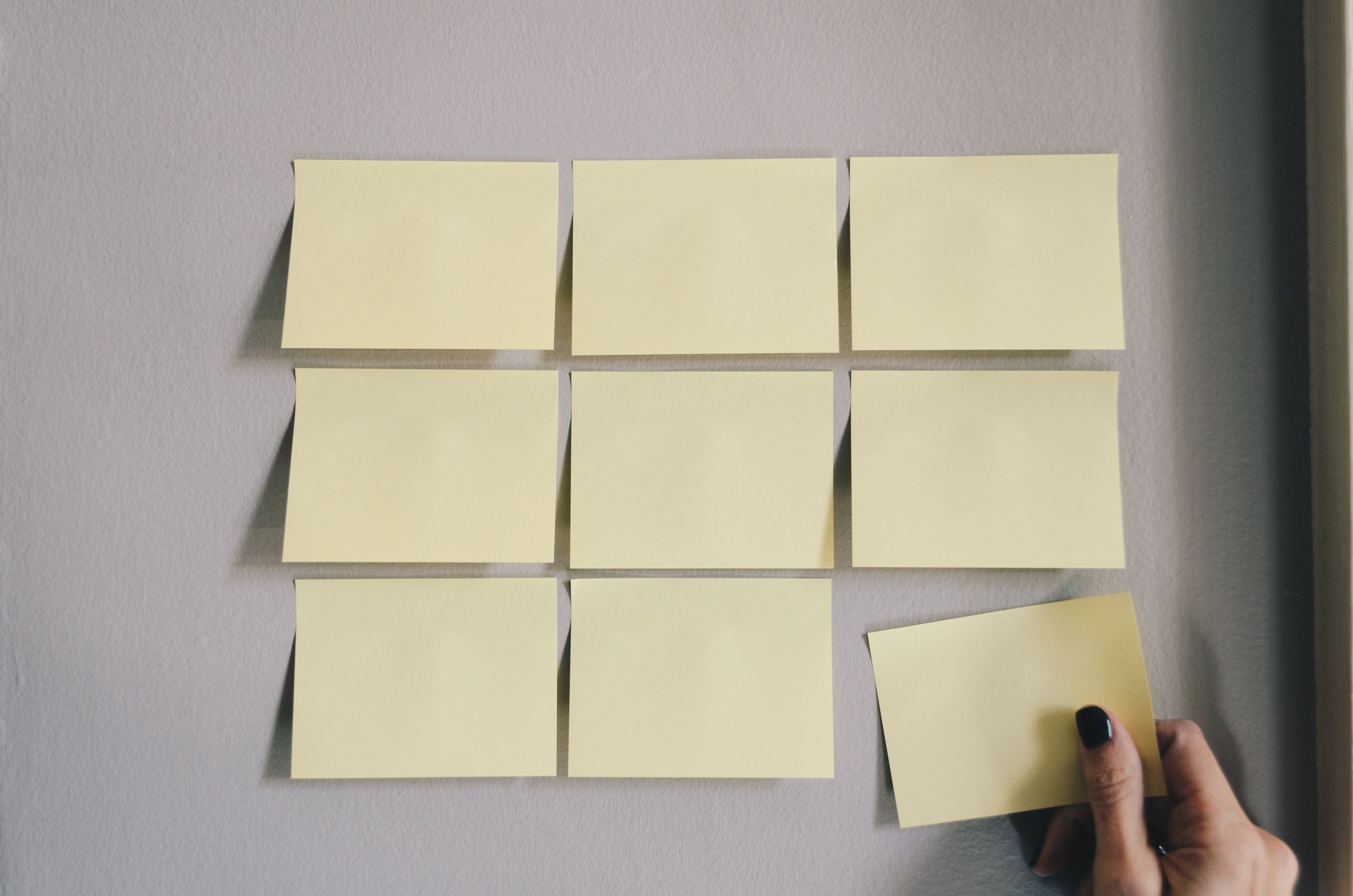
Ask Alma: How Do I Stick to a Routine When I Hate Structure?
Ask Alma is an advice column helping you to untangle questions about therapy, relationships, identities, and mental health from a peer perspective. Columnist Sam Dylan Finch shares his insights gained from nearly a decade of experience as a neurodivergent advocate and journalist specializing in mental health and wellness.
SDF: As someone with both autism and ADHD, I can relate! I often experience this push and pull, where I find that structure and consistency are very supportive of my well-being, but I also feel downright allergic to doing things the exact same way, day in and day out.
There are three considerations that I think are important when we’re revisiting our routines. Namely, how can we frame our expectations of ourselves fairly, how can we meet ourselves where we’re at, and what skills can we use to support us?
Using these three questions as a roadmap, I’ll offer my best tips and tools to ensure that your dabbling in a new routine feels as supportive as possible.
1. Reframe Your Motivation
Here’s the surest way to sink your “I’m going to adopt a bunch of new habits!” ship before it leaves the dock: Make shame your primary motivator.
If your motivation for adopting a new routine is coming from a place of self-criticism and shame — in other words, if you’re driven by a whole lot of “shoulds” and plan to strongarm your way through — you will struggle to keep up the routine.
A lot of us have absorbed messages that we need to bully ourselves into change, otherwise it won’t happen. I see this show up again and again with the topic of habits and routines. We think, “If I drank more water, exercised more, meditated each morning, and spent 15 minutes outside, my whole life would be transformed!”
But the subtext hiding underneath is usually something like: “I’m not good enough right now. And these are the things that will make me good. If I don’t do these things, it’s my own fault that I feel bad.”
When you outsource your self-worth and well-being, though, the moment that external thing unravels, you often end up feeling pretty horrible about yourself.
And it probably will unravel. When your self-esteem is held together by the success or failure of a very specific “pass/fail” commitment, it ends up being a tremendous amount of pressure — and “failing” the routine, as disappointing as it is, can also be a relief when those expectations are looming over us.
So what’s the alternative, then?
Rather than viewing your routine through the lens of shame, in which you need to adhere to that routine in order to “be better,” what if it were a flexible experiment, in which you can focus on feeling good about the process?
One way of doing this is to set what’s called process goals, which focus on the experience of something, rather than outcome goals, which focus on the results in a tangible way (thanks to my coach, Alexis Rockley, for introducing me to this language!).
Your outcome goal might be to stick to a consistent morning routine every day for 30 days. This not only has you fixated on the finish line, but it’s also very “all or nothing” — you either comply for 30 days, or you’ve failed at your goal.
It also begs the question, what is the routine even for, if the only point is to do it repeatedly for a month, even if it makes you feel bad along the way?
A process goal, on the other hand, would view a routine as an experiment, with curiosity as the motivator. Your process goal could be tinkering with your morning routine for a month, just to see how you feel as you tweak aspects of your routine.
This allows you to adjust as you try new things, to not do things perfectly each day, and to focus on how the routine feels for you as you try it, rather than fixating on compliance with an arbitrary number or schedule.
💡 Tl;dr: Rather than letting shame drive you to create new routines, how might curiosity be your compass instead?
Consider your goals for this new routine, and see if you can shift them from being outcome goals (focused on the end result and perfect adherence) to instead becoming process goals (focused on how you feel and staying flexible as you experiment and make changes).
2. Meet Yourself Where You’re At — Not Where You Wish You Were
One of the classic mistakes that folks make when we set up a new routine is that our routine is typically aspirational.
We create a routine that mirrors our ideal morning or evening — and that isn’t necessarily a bad instinct! That dream routine can feel motivating at first, when we imagine how good we’re going to feel if we can follow through.
But human beings are seasonal. We may have moments in life when we’re boundlessly energetic, and other times when we’re completely depleted, and our capacity for routines will shift right along with it.
And for me, as someone who’s both chronically ill and neurodivergent, I can have moments like those in the same exact week. My energy waxes and wanes constantly.
However, that doesn’t mean that you create the most basic routine ever! When we let go of the aspirations we have, it can feel like we’re sucking the life out of the routine, and losing track of our intention, which was to feel better.
Those activities that we hoped to incorporate are often what get us excited about the routine in the first place! It just may not be realistic to expect ourselves to do those things every day.
Instead, I recommend that folks create two versions of their routine — a high battery version and a low battery version.
Basically, you’ll write out the most essential activities you need to complete, and then you’ll imagine a more luxurious or enhanced version of that activity for those times when you have a little more gas in the tank.
So, for example, during chapters of my life in which I was deeply depressed and demand avoidant, my morning hygiene involved a disposable toothbrush, breath mints, and face wipes that I kept in my desk drawer.
This was the simplest way I could take care of myself without shutting down, by lowering the barrier to entry to my routine as a whole, giving me options that were still within my bandwidth.
On the flip side, on days when I had more energy, my hygiene was more involved. I’d use my electric toothbrush, play some music that I loved, use fun flavors of toothpaste, wash my face with fancy products, that sort of thing.
And most days, my morning routine involved mixing and matching low and high battery activities, depending on what I felt up for! This worked well because, with each step of my routine, I could check in with my body and see what I was in the mood for, while ensuring my routine never felt “stale.”
💡 Tl;dr: Meet yourself where you’re at, in every season!
Create two versions of your routine — one that’s aspirational and your ideal activities, and the other that’s more practical and focused on getting your basic needs met. Then, try “mixing and matching” each day based on your energy and motivation levels.
3. Incorporate Rewards, Accountability, and Novelty (RAN Method)
Back when I was an ADHD coach, an acronym that I created, known as the RAN Method, really seemed to resonate with my clients. Since then, I’ve seen how helpful it can be for anyone who struggles with motivation.
“RAN” is an acronym that describes the three ingredients — rewards, accountability, and novelty — that help individuals who struggle to self-motivate, known as intrinsic motivation. These three ingredients can help us externalize motivation (or, put another way, adjust our environment to increase our sense of motivation).
Usefully, RAN also happens to highlight where routines tend to fall apart for many of us, especially those of us who are neurodivergent.
Rewards
If a routine doesn’t feel rewarding, it’s unlikely to be something you want to follow through with. So where can you add pleasure, excitement, and joy to your routine?
Maybe it’s keeping your favorite breakfast cereals on-hand to increase your motivation to eat consistently, or putting your Nintendo Switch out in the living room to entice you out of bed in the morning.
Accountability
This is a concept that is often misunderstood by others who try to adopt this framework. Accountability is not meant to apply pressure or guilt in order to force us to follow through.
Instead, it’s best thought of as connection with investment, which can take an otherwise isolated effort and allows us to feel more supported and more engaged in the process.
Maybe you have a text check-in with a friend who’s similarly experimenting with their routine, you post a photo to a group chat each morning, or you use an app like Routinery, Cat Pomodoro, or Finch that feels a little interactive and still keeps you invested in the process.
Novelty
Doing the same thing, the same way every single day can start to feel really stifling. This kind of boredom can actually deplete our motivation, even biochemically! This is why novelty, or the sense of newness an activity or environment has, is really important for brain functioning.
But you probably don’t need a neuroscientist to tell you that if something is boring, you’re likely to abandon it. So how do we add novelty to our routines, while still getting the sense of consistency that helps us to feel balanced?
It could be switching up the types of coffee you drink, trying a new playlist out, having multiple flavors of toothpaste, roleplaying a different character each morning, or like we discussed previously, having a few versions of each activity to align with your energy level that day!
You might also consider putting a monthly check-in on your calendar to remind you to “refresh” some of the activities in your routine.
💡 Tl;dr: Try the RAN method — incorporating rewards, accountability, and novelty — as foundational skills as you experiment with your routine.
Remember: Routines Shouldn’t Feel Like Punishments
Whenever you’re attempting to change something in your life — whether that’s a routine, a relationship, or something else — I hope you’ll choose flow over force.
Which is to say, your routine shouldn’t feel like something that’s forced, or something you need to trick your brain into cooperating with. Routines shouldn’t feel like punishments, assigned to compensate for the ways in which you supposedly aren’t doing enough or being enough.
You really are enough, exactly as you are! Routines are meant to enhance our lives, not chip away at our self-worth.
Please remember, you aren’t a robot to be programmed into compliance. You are a human being, and as such, you both need and deserve to experience joy, aliveness, comfort, and support as you experiment with your day-to-day routines.
And? If nothing seems to be working, please know that you don’t have to go it alone. You might consider something like neurodiversity-affirming therapy, to better understand your unique brain and how to create systems of support that work with you rather than against you.
You’ve got this, friend!
Next steps: Consider your motivation for changing your routine (shame or curiosity?), and explore what kinds of support and strategies you might find helpful to ensure you approach these changes from a place of self-compassion.
Nov 22, 2024

Looking for a therapist?
Get tips on finding a therapist who gets you.
By submitting this form, you are agreeing to Alma's privacy policy.



